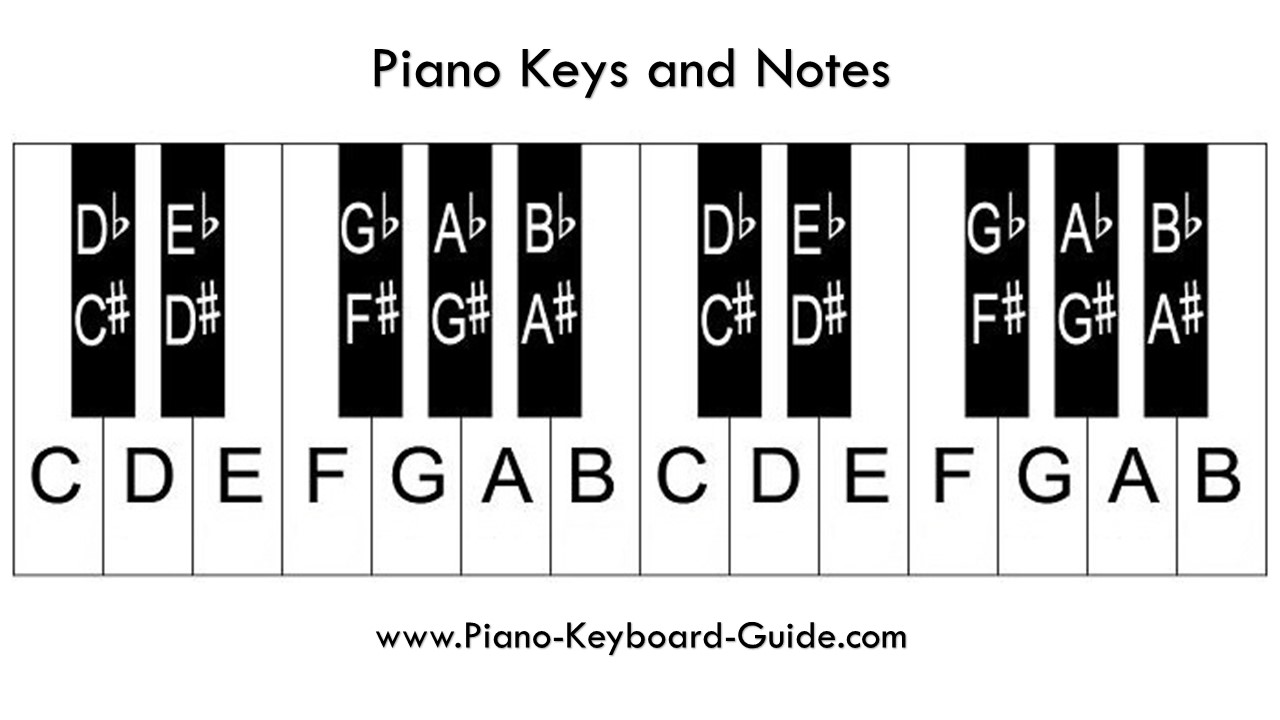Last week I had discussed how chords were the building blocks of most aspects of music, and ware what cause many very different songs to sound eerily similar. Before I can show how some songs are related, I must first discuss the many types of chords, and the four types of chords primarily used in music, and to get to this point, I have to discuss keys and accidental notes.
Every song is made up of a different key which can help it sound unique. For the sake of simplicity, due to MOST popular tunes being written in major keys, I will only discuss the main major keys. For each of the 12 notes, there is a key where that note is the first scale degree of the scale. This means that all these scales will follow the same systematic pattern, but on different notes. It is important to note that three of these 12 keys are identical, so you could name 15 keys when there are only 12. How is this one might ask?
Accidental notes are those that are a little higher in pitch (sharp notes) and a little lower in pitch (flat notes) than the listed note. For example, a C flat (written as Cb) would be a little lower than C (precisely what is called a half step and will be discussed later). A C sharp (written as C#), on the other hand, will be a little higher in pitch than a regular C note. On the piano, most accidentals are signified by the black keys, but in the instances of B, C, E, and F, the sharp notes can be on white keys. Additionally, many sharp notes of sequential notes are the same pitch as a flat note of the following note. Hopefully, the below chart illustrates everything I am referring to.

What this chart lacks, unfortunately, is signifying that a Cb is played on the same not as a B, a B# is played on the same note as a C, and the same logic applies to E and F. It is due to these pitches that have multiple names that there are 12 keys. Each key has a different series of notes that make up the major scale pattern, which follows a pattern of whole and half steps. It may help to visualize consecutive notes a half step apart as the closest note on the upper right part of the key. For example, the the half step up from E would be an F, whereas a half step up from A would be and A#/Bb. A whole note, on the other hand, is two of these half steps.
Using this knowledge, a major scale in any key can be found by picking a note and the notes that are a Whole-Whole-Half-Whole-Whole-Whole-Half step apart from the previous picked note. This will yield the notes of any major key.
I enjoyed this post again. I appreciate you breaking down scales so simply that (presumably) when we get to octaves and keys, it’ll be a natural progression. I also appreciate you including the picture to make it easy for a regular person to visualize notes’ positioning and thus the composition of a scale. But yeah, I have a friend who’s majoring in music theory, so I know there’s a lot more deep meanings and patterns to look forward to.
Hi Duncan. I love your posts and how simple you are making music theory. I like that you are breaking down the scales, using half-steps and whole-steps to explain it all. The picture is also very helpful, especially for those who are less familiar with music and scales. I did have one question: Are you going to include a post about minor scales and their relationship with major scales? I think that it may help people understand maybe why major scales are called major scales and how they differ from minor scales. Anyways, I really like your posts so far and how you are making music theory an easy topic to learn for readers!
Hi Duncan! I am always excited to read your blog even though I have no history with music theory. Many of my friends and even my girlfriend took music theory and played instruments, so it is cool to have a little understanding of the things they are discussing. I like that you took advice from the comments last week and put another image in your post. Once again, reading about the information and then seeing it locks the information in my brain better. Although music theory is generally confusing, I appreciate how simple your explanations are, especially for those reading this that know nothing about music.